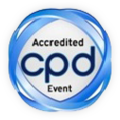
Wael Ebied
SEDICO Pharmaceutical, Egypt
Title: Bioavailability and bioequivalence concerns in pharmaceutical industry
Biography
Biography: Wael Ebied
Abstract
To accomplish a desired systemic effect, drug molecules must reach the systemic circulation after extravascular administration. The percent of the taken dose that reaches intact to the systemic circulation is called “bioavailability, BA”. Absolute Bioavailability compares the BA of the active drug in systemic circulation following non-intravenous administration (i.e., after oral, rectal, transdermal, subcutaneous, or sublingual administration), with the BA of the same drug following intravenous administration. Bioequivalence (BE) is a term in pharmacokinetics used to assess the expected in vivo biological equivalence of two proprietary preparations of a drug. If two products are said to be bioequivalent it means that they would be expected to be, for all intents and purposes, the same. Toxicological studies and full-scale clinical trials are conducted to prove that the product is of good quality, safe and effective, however it could be reduced by performing BE studies. In case of minor changes of a marketed product or by manufacturers of generic drugs, we typically perform BE studies. The main test methods suitable for assessing equivalence are; comparative pharmacokinetic studies in humans, comparative pharmacodynamic studies in humans, comparative clinical trials, comparative in vitro tests or no equivalence test necessary. Biowaver is Comparative in-vitro tests as per FDA and WHO guidelines. For the two products, the biowaiver data must demonstrate: comparable impurity profiles. Respecting ICH Q3B, a long term stability study must be conducted, demonstrating that the acceptance limits for the new product do not exceed the comparator ones, in addition to equal pharmaceutical performance by dissolution testing. Compliance with any of the Dissolution, Disintegration, and Drug Release tests does not assure BE or BA”. The United States Pharmacopoeia (USP) 37 has recently included this statement. The USP sets standards for the dissolution but often those suggested test methods are modified by the manufacturer to meet the specific needs of the product. A dissolution profile is then constructed (Time vs Amount Dissolved) and this is compared to the reference compound or standard for the dosage form in being dissolved. An IVIVC (In-vitro in-vivo correlation ) has been defined by the FDA as "a predictive mathematical model describing the relationship between an in-vitro property of a dosage form and an in-vivo response". Solubility and BA are big challenges in drug development. There are difficulties in obtaining optimum absorption from the gastrointestinal tract (GIT) after oral administration. Excipients are generally pharmacologically inert, but can interact with drugs in the dosage form and the physiological factors at the site of absorption to affect the BA of a drug product. In the industry, we should have practical, proven approaches for overcoming these barriers to progress. Approximately 80% of the compounds at present in development for future use, and 50% of all drugs currently on the market are reported to show poor solubility in water.

